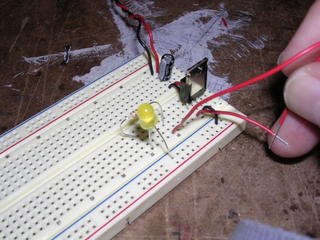Observation Proposal
Observation Proposal
We would like to propose an interactive table. This table would sense the user’s presence and respond to it by changing its aura. Our goal is to modify the behavior of the typical Starbucks customer, by encouraging him or her to share his or her table, and interact with other customers, rather than burying their heads in laptops or textbooks. The reward for doing so will be the discovery of the various aura states that the table can achieve. And of course an added benefit will be more social interaction.
The system is based on the present 36” diameter café table used throughout Starbucks, a table designed to seat four. We would replace these existing tables with one of our own design, allowing the technology to be embedded seamlessly within.
The table would be manufactured in a durable translucent plastic, such as polypropylene. Its aura would be controlled by a cup of coffee and a system made up of simple electronics, all residing on the underside of the table. The table would have four screenprinted designs reminiscent of coasters distributed evenly around the top. They would act to subtly encourage users to place their cups in specific places. On the underside of the table, a group of four photo-sensors would be placed to correspond to the location of the coasters. The photo-sensors would provide analog input to a microcontroller, which would interpret the signal and create digital output. The digital output would control four separate arrays of LEDs. Each array would be made of a single color: red, green, blue, and yellow. The LEDs would be spread throughout the table and when turned on, would produce the table’s gentle glow. The system would also require a power supply.
The initial point of interaction is placing the cup of coffee down on the table. If the coffee is placed on the coaster, light will be prevented from reaching the photo-sensor, and will change the signal it is sending to the microcontroller. The microcontroller program will need to look not just for change in each input but also compare the input with a series of if then/else statements, to determine where the triggered sensor is. There are six possible array states depending on the number of sensors activated, and their proximity to one another. The first state is the available table, where there are no changes in the input signal, and the blue LEDs are turned on. In the second state, one input is triggered and the red LEDs are turned on and added to the blue ones. In the third state, two inputs are triggered, and if they are neighboring sensors, just the red LEDs will remain on; if the sensors are not neighboring, then the red, blue and yellow LEDs are turned on. When three sensors are triggered, the aura switches to a fourth state, turning on just the red and yellow LEDs. The final state is the one in which all the photo-sensors are triggered, and the microcontroller turns on all four LED arrays.
The program that runs the microcontroller will also need to control the timing used when switching between states. It would become rather annoying to sit at a table that was blinking like a disco floor every time you took a sip of coffee. A slow fade would be nice.







